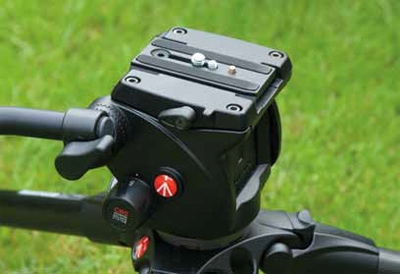articles/Cameras/takingadvantageofdslrvideo-page1
Taking advantage of DSLR Video - part 1 of 1 2 3 4
by Stuart Barry Published 01/12/2010

Let's imagine the scene. For the third time this year, at the end of a good discussion about your wedding packages, the prospective client utters the dreaded words: "and can you do video?" You start to go through the video offerings from a colleague you have worked with before, but the client goes quiet as the price doubles.
The digital revolution did not stop with still cameras. Now that most people have a high-resolution mobile phone camera, some even with HD video, clients expect us to be experts in all forms of digital imaging.
So what do you do? Hope it will all go away, and that video and photography will remain discrete and entirely separate worlds? Or give it a try? Let's give it a try. It might not be as scary as you fear.
Cameras
If you already have one of the latest DSLRs with HD (high definition) video included you are off to a flying start. If not, treat this as an opportunity to upgrade to a great new stills camera with HD video thrown in - you will not be disappointed. If you are really nervous about making that investment, try hiring a camera for a week to see how you get on.

There are big differences between a traditional video camera and a DSLR and the DSLR is not the easiest device to use for shooting video. But if the makers of House feel that a Canon EOS 5D mark II is good enough for filming the whole of the next series, then it is certainly good enough to make good movies for me.
The DSLR does have one huge advantage over most video cameras - the lens/sensor combination. In the budget to mid-range, video cameras tend to have a small sensor and large depth of field. This covers the scene well, but gives a flat image. With a DSLR we can take advantage of a full 35mm sensor plus all those high-quality f2.8 lenses to produce stunning image quality with good depth of field characteristics (or even 1.4, see Sigma review this issue - Ed). This gives a cinema feel to productions, and a more professional look than from anything other than a very expensive video camera.
Useful add-ons
The video world is expensive. This is especially true with all the new gizmos coming out for DSLR film makers. It seems that the video crowd likes the features and price of our kit and is not worried about splashing out £2,500 on a shoulder grip. But don't rush into buying everything at once. You may not need it. This is what I suggest to get started.
A tripod with a good video head is an essential piece of kit. If in doubt, use it. Despite modern reality-show filming techniques, there is nothing that looks more amateurish than wobbly video. If you already own a decent tripod just buy a video head and swap over when you need. A video head has dampening that makes it pan and tilt more smoothly than a stills head. A good tripod will be strong enough to attach numerous accessories.
You are currently on page 1
- Taking advantage of DSLR Video page 1
- Taking advantage of DSLR Video page 2
- Taking advantage of DSLR Video page 3
- Taking advantage of DSLR Video page 4
1st Published 01/12/2010
last update 09/12/2022 14:59:30
More Cameras Articles
There are 0 days to get ready for The Society of Photographers Convention and Trade Show at The Novotel London West, Hammersmith ...
which starts on Wednesday 15th January 2025





